Buying medicine online sounds convenient-until you realize you might be ordering a pill that could kill you. Every day, thousands of people search for cheaper versions of Ozempic, Botox, or even antibiotics, clicking on websites that look just like real pharmacies. They see professional logos, secure-looking checkout pages, and prices that are half what they’d pay at a local store. But behind those polished websites are criminal networks selling fake drugs filled with fentanyl, rat poison, chalk, or nothing at all. This isn’t science fiction. It’s happening right now, and the consequences are deadly.
What Exactly Are Counterfeit Medicines?
Counterfeit medicines are fake drugs designed to look like the real thing. They might have the right color, shape, and branding-but they don’t contain the correct active ingredients. Some contain too little of the drug, making them useless. Others contain too much-or worse, dangerous substances like fentanyl, methamphetamine, or industrial chemicals. The FDA has confirmed cases of counterfeit alli (orlistat) capsules, fake Botox injections, and fake Ozempic pens that contained no semaglutide at all. These aren’t just poorly made knockoffs. They’re lethal products made by organized crime groups with no regard for human life.Why Are Online Pharmacies So Dangerous?
Most online pharmacies selling prescription drugs are illegal. According to the National Association of Boards of Pharmacy, 95% of websites offering prescription medications operate without licenses. These sites don’t require prescriptions, don’t employ licensed pharmacists, and don’t store medicines under proper conditions. A pill shipped from a warehouse in India or China might sit in a hot truck for days before reaching your mailbox. Heat destroys medicine. Contamination is common. And there’s no way to trace where it came from. The problem is even worse with high-demand drugs. Weight loss medications like Ozempic, cosmetic treatments like Botox, and painkillers like oxycodone are prime targets. Criminals know people will risk anything to save money or avoid seeing a doctor. A single counterfeit Ozempic pen can sell for $200 online-while the real one costs over $1,000. The profit margin is enormous, and the risk of getting caught is low.The Deadly Realities: Fentanyl and Beyond
The most terrifying trend? Fake pills laced with fentanyl. The DEA seized over 60 million counterfeit pills containing fentanyl in 2024 alone. These pills look identical to legitimate oxycodone or Xanax-but one can kill you. Fentanyl is 50 times stronger than heroin. A dose as small as two milligrams can be fatal. People think they’re buying a painkiller. Instead, they’re ingesting a death sentence. It’s not just opioids. Counterfeit antibiotics have been found with no active ingredient, leaving infections untreated. Fake diabetes meds can cause dangerous blood sugar spikes. Fake Muro 128 eye drops have caused permanent eye damage. These aren’t rare cases. The Pharmaceutical Security Institute recorded over 6,400 incidents of counterfeit drug activity across 136 countries in 2024. And that’s just what was caught.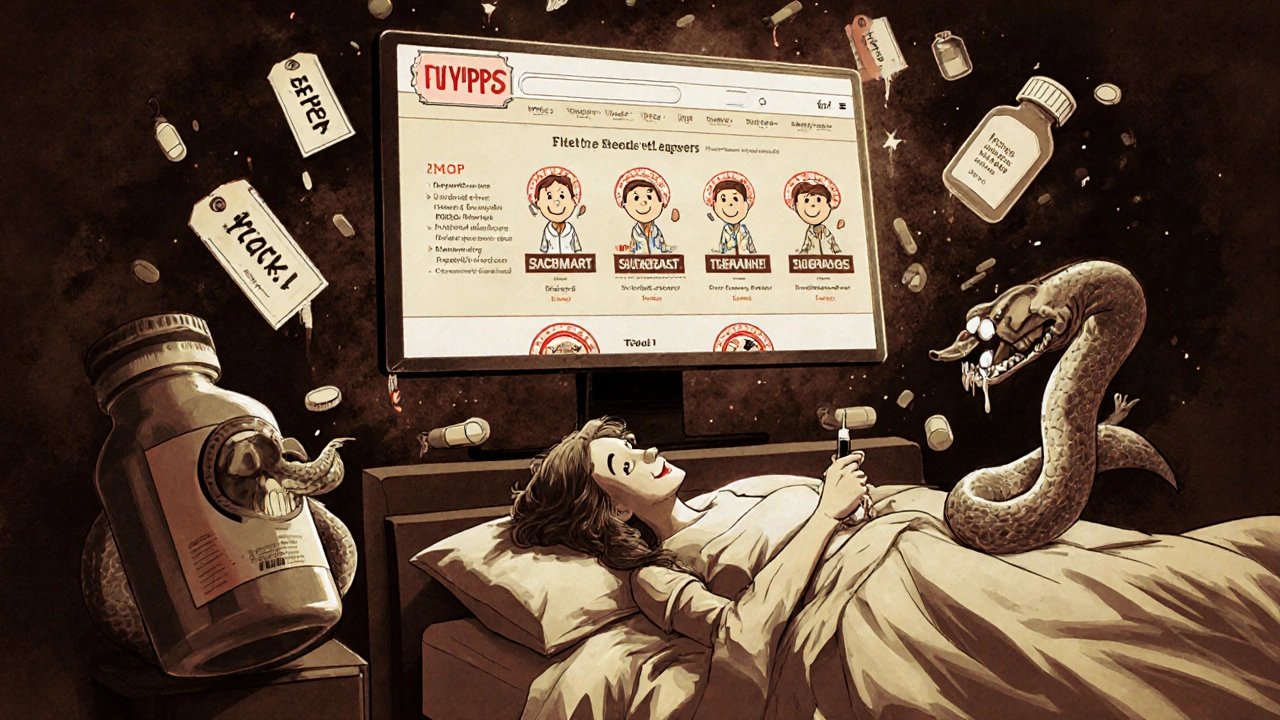
How to Spot a Fake Online Pharmacy
Legitimate online pharmacies follow strict rules. Here’s what to look for:- They require a valid prescription. No legitimate pharmacy will sell you prescription drugs without one.
- They have a licensed pharmacist on staff. You should be able to call or chat with a real pharmacist, not a chatbot.
- They’re physically located in the U.S. or your country. Look for a physical address and phone number. If it’s just a PO box or a foreign address, walk away.
- They’re verified by VIPPS. The Verified Internet Pharmacy Practice Sites (VIPPS) program, run by the National Association of Boards of Pharmacy, certifies only about 5% of online pharmacies. Check their website for the VIPPS seal.
- They don’t offer “miracle” discounts. If the price is too good to be true, it is. Real medications cost money to make, test, and distribute.
What Happens When You Buy from a Fake Site?
Many people don’t realize they’ve taken a counterfeit drug until it’s too late. Some experience sudden illness-nausea, dizziness, heart palpitations. Others don’t feel any effect at all, thinking the medicine “isn’t working.” That’s how people end up increasing their dose, worsening the risk. In worst-case scenarios, patients die from overdose or untreated conditions. The FDA’s MedWatch program has received hundreds of reports from people who suffered adverse reactions after buying drugs online. One woman bought fake Botox and developed facial paralysis. Another took counterfeit Ozempic, lost weight, but later discovered his blood sugar had skyrocketed because the drug contained no semaglutide. These aren’t isolated stories. They’re symptoms of a broken system.How to Protect Yourself
You don’t need to avoid online pharmacies entirely-but you must be smart:- Only use pharmacies listed on the VIPPS website or approved by your country’s health regulator.
- Never buy prescription drugs without a valid prescription from your doctor.
- Check the pharmacy’s physical address. Call them. Ask to speak to a pharmacist.
- Look for the NABP VIPPS seal. Click on it-it should link to the official verification page.
- Use your local pharmacy’s mail-order service if available. Many offer discounts and ship legally.
- If something feels off, trust your gut. Walk away.
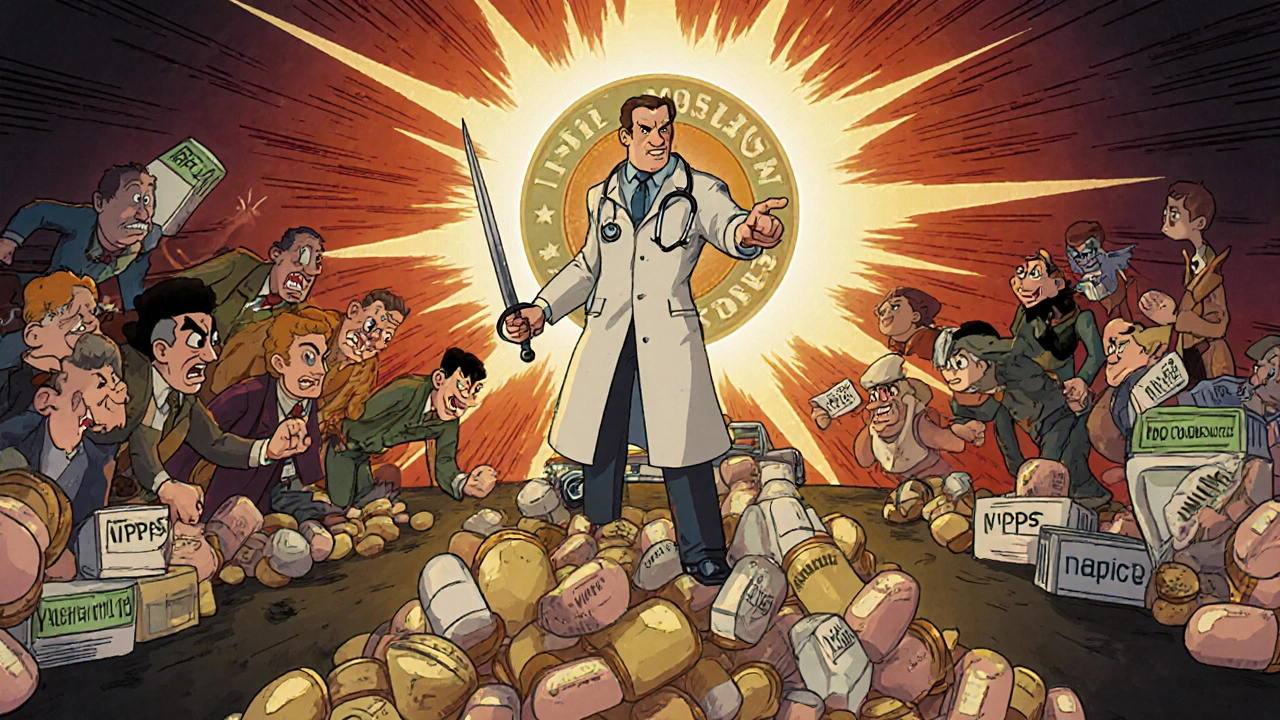
What to Do If You’ve Already Bought Counterfeit Medicine
If you’ve taken a drug from an unverified website:- Stop taking it immediately.
- Save the packaging, receipt, and any remaining pills.
- Contact your doctor or go to the emergency room if you feel unwell.
- Report it to the FDA through MedWatch: call 1-800-FDA-1088 or visit fda.gov/medwatch.
- Report the website to the FDA’s Office of Criminal Investigations at [email protected].
Even if you feel fine, report it. Your report helps authorities track criminal networks and shut down dangerous sites before someone else dies.
The Bigger Picture: Why This Keeps Happening
This isn’t just about greedy sellers. It’s about systemic failures. Weak international laws, slow enforcement, and the ease of hiding behind fake websites make this trade incredibly profitable for criminals. The OECD estimates that U.S. companies lose 38% of all seized counterfeit medicines-a sign of how global the problem is. Meanwhile, consumers are told to “be careful,” but no one teaches them how. Governments are trying. Interpol’s 2025 Operation Pangea shut down 13,000 websites and made 769 arrests. The U.S. Drug Supply Chain Security Act (DSCSA) requires electronic tracking of drugs from manufacturer to pharmacy. But online pharmacies operate outside these systems. They’re invisible. The only real defense? Informed consumers. If enough people stop buying from fake sites, the business model collapses. That starts with knowing the signs-and refusing to take the risk.Final Warning
There’s no safe way to buy prescription drugs from a website you don’t trust. No discount, no convenience, no “just this once” excuse is worth your life. The same pills that help you manage your health can kill you if they’re fake. And the people selling them don’t care if you live or die. They’re not pharmacists. They’re criminals. Don’t become another statistic.How can I tell if an online pharmacy is real?
A real online pharmacy requires a valid prescription, employs a licensed pharmacist, displays a physical address and phone number, and is verified by programs like VIPPS. Check the NABP website to confirm their status. If a site offers drugs without a prescription or has no contact info, it’s fake.
Are all cheap online pharmacies dangerous?
Almost all. Legitimate pharmacies don’t offer 80% discounts on brand-name drugs. If the price seems too good to be true, it is. Counterfeiters use low prices to lure people in. Always verify the pharmacy’s credentials before buying, no matter how cheap the offer.
Can counterfeit medicines make me sick even if I feel fine at first?
Yes. Many counterfeit drugs contain inactive ingredients that cause delayed reactions-like organ damage, allergic responses, or worsening of your condition. Fake diabetes meds might seem to work at first but fail to control blood sugar over time. Fake antibiotics won’t kill infections, letting them spread. The harm isn’t always immediate, but it’s real.
What should I do if I think I bought fake Ozempic or Botox?
Stop using it immediately. Save the packaging and any remaining product. Contact your doctor to discuss symptoms or lack of effect. Report it to the FDA through MedWatch (1-800-FDA-1088 or fda.gov/medwatch). Also report the website to the FDA’s Office of Criminal Investigations. These reports help shut down criminal operations.
Is it safer to buy from a pharmacy in another country?
Not necessarily. Many international websites are fake or operate illegally. Even pharmacies in countries with strong regulations may sell counterfeit products if they’re not licensed to ship to your country. Only use pharmacies verified by your own country’s health authority. Avoid foreign sites unless they’re officially approved for international shipping.
Can I trust online pharmacies that have secure payment and HTTPS?
No. HTTPS only means your payment is encrypted-it doesn’t mean the medicine is real. Fake pharmacies use secure payment systems to trick people into thinking they’re safe. Always check for a physical address, licensed pharmacist, and VIPPS certification. Security on the payment page doesn’t guarantee safety of the product.

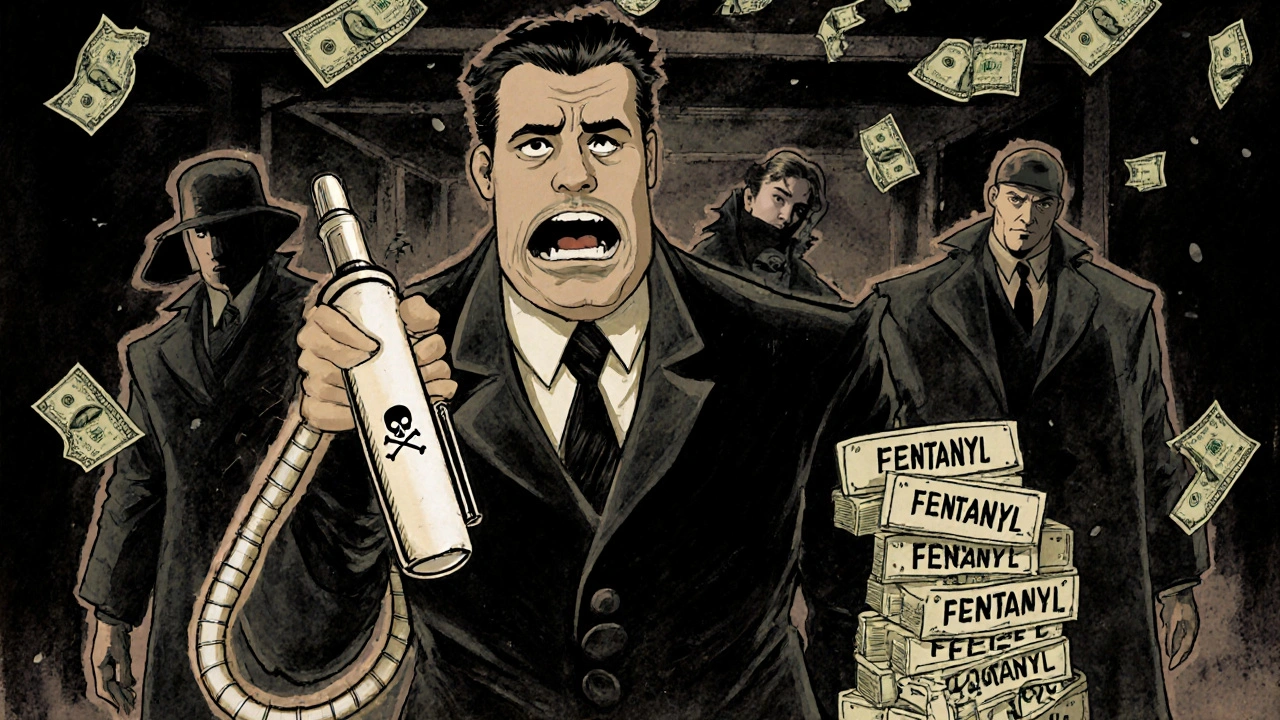
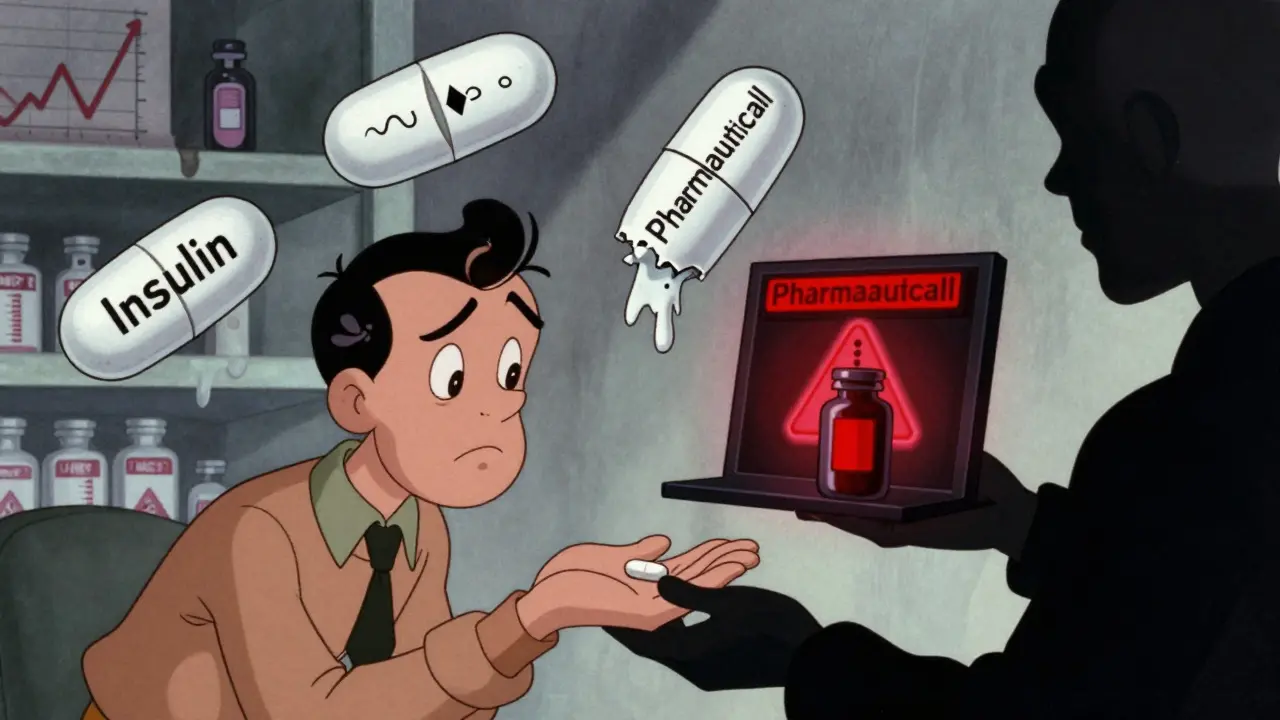
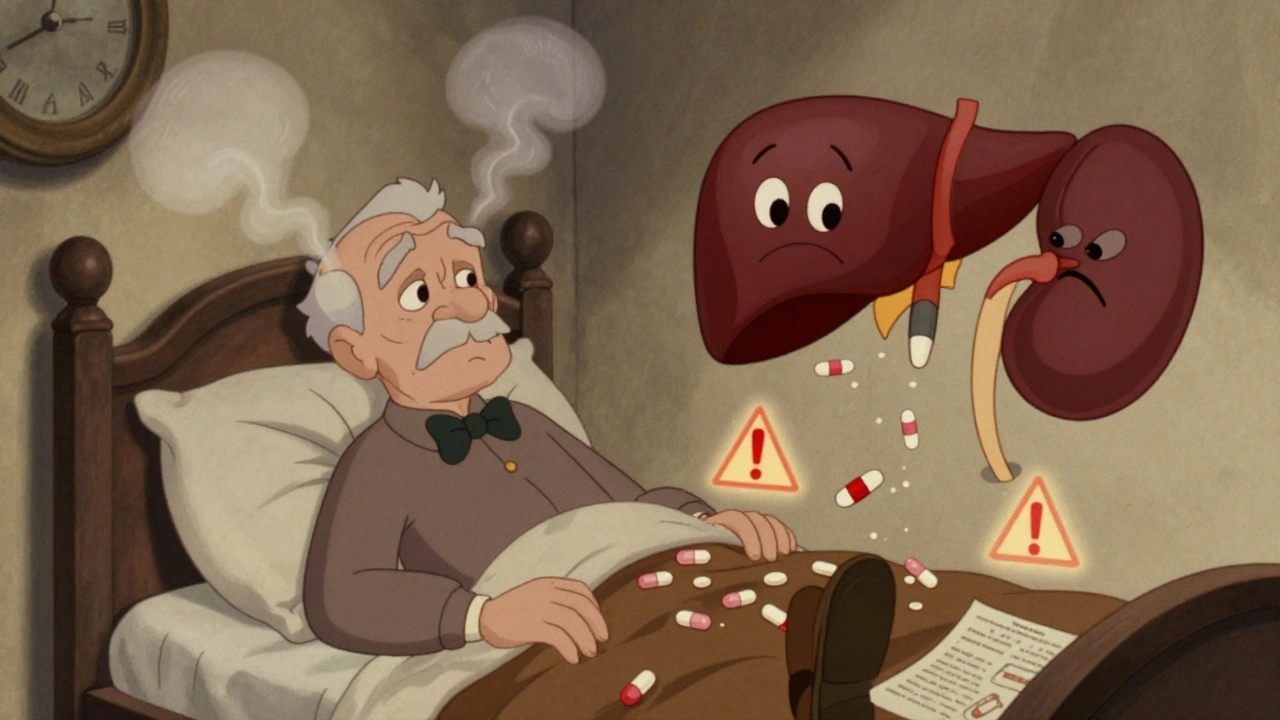
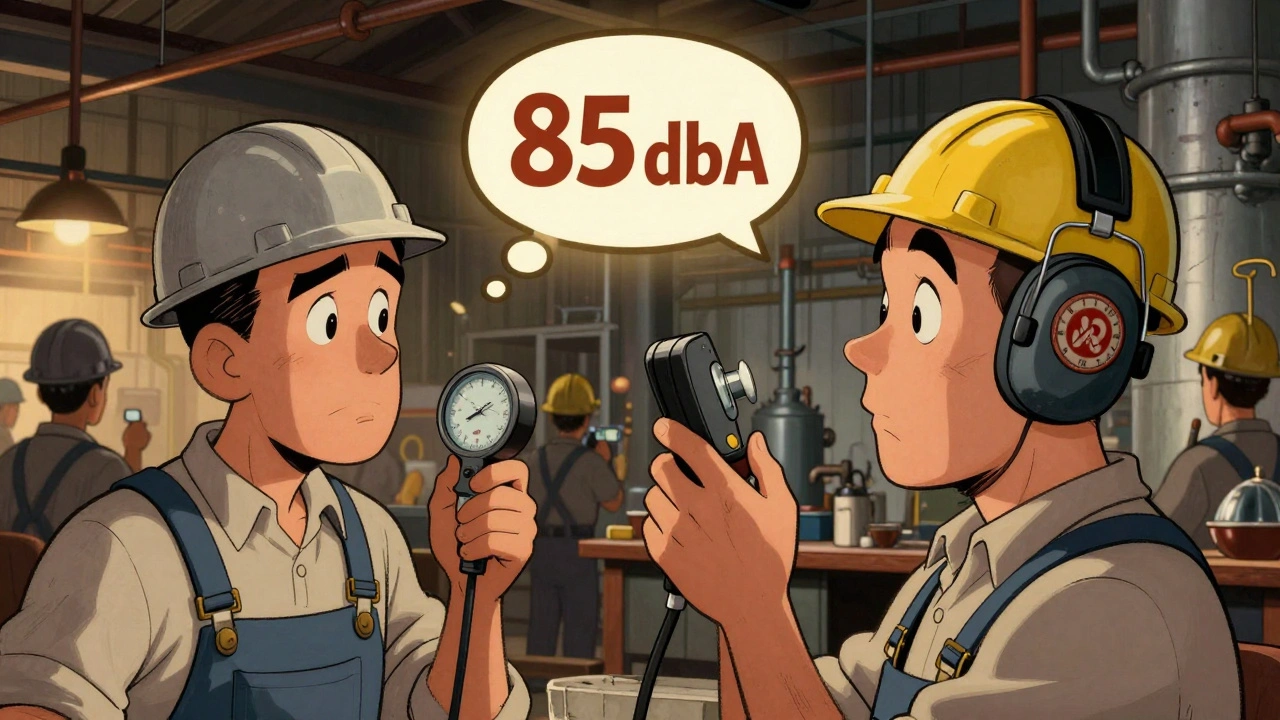
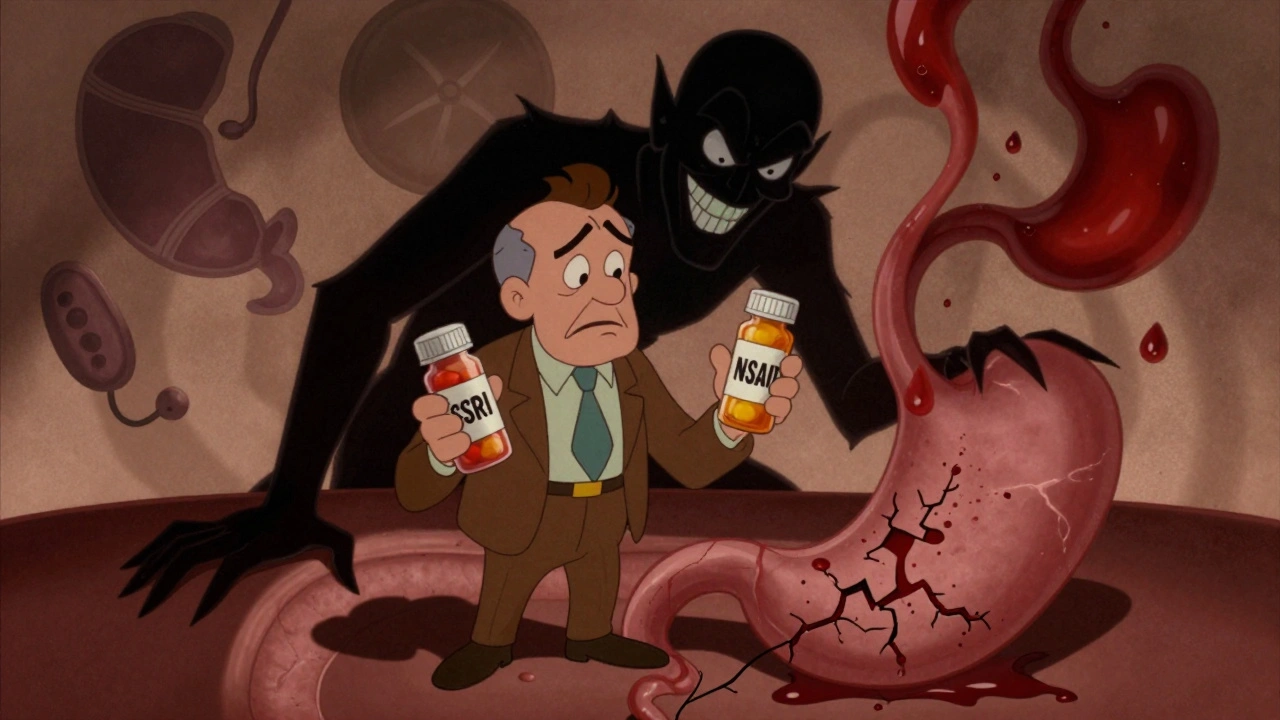
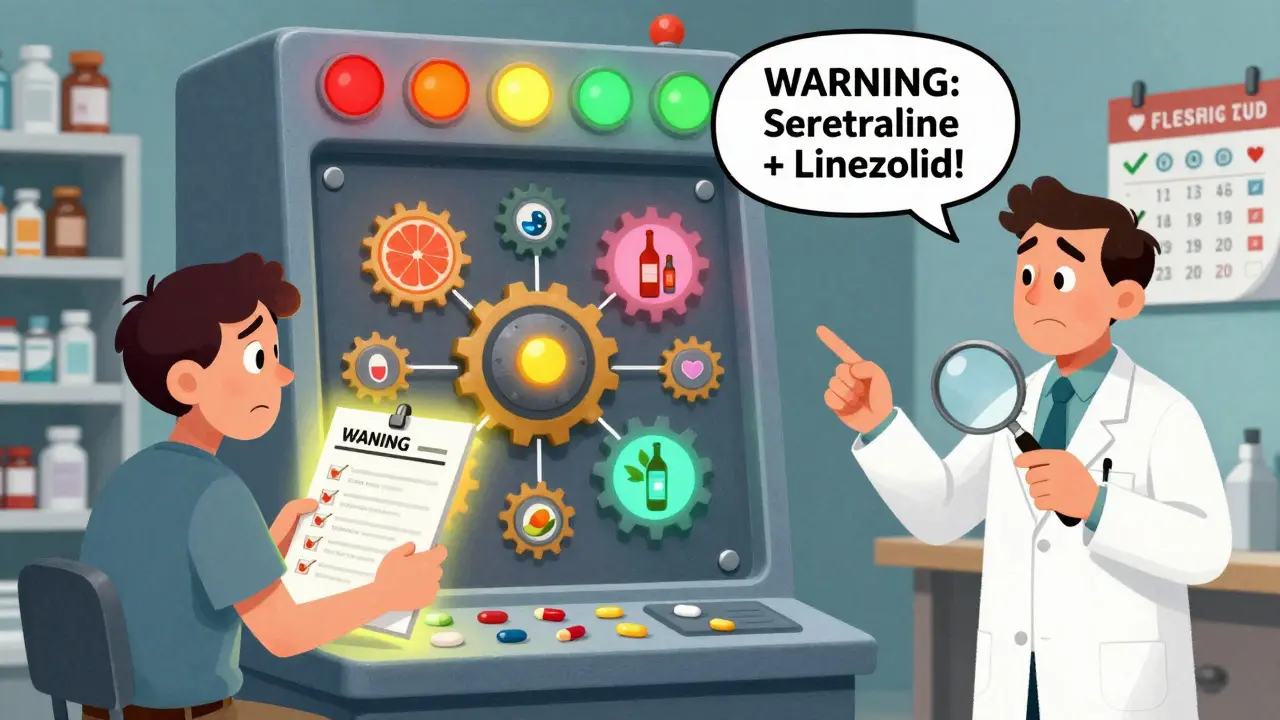
Manish Pandya
Just last month, my cousin in Delhi ordered cheap Ozempic from a site that looked legit-paid via UPI, got the package in 3 days. He thought he was saving money. Turns out, the pen had zero semaglutide. He ended up in the ER with diabetic ketoacidosis. No one warned him. No one checks these things. Please, if you're thinking of buying online, just call your doctor and ask for a coupon or patient assistance program. It's not worth risking your life for $200.
I've seen too many people fall for this. The websites are slick, the reviews are fake, and the packaging? Perfect. But the pills? Nothing but chalk and fentanyl. Stay safe.
Benjamin Gundermann
Look, I get it-America’s healthcare system is a dumpster fire, and that’s why people turn to these sketchy sites. But here’s the thing: blaming the buyer is lazy. Why does a life-saving drug like Ozempic cost $1,000 here but $80 in Canada? Why do we let Big Pharma turn medicine into a luxury good? These criminals are just filling the vacuum left by greedy corporations and broken policy. We need price caps, not moral lectures.
And don’t even get me started on how the FDA lets this happen while chasing people for vaping pens. Priorities, people. Priorities.
Also, ‘VIPPS seal’? That’s like trusting a security camera made by the guy who robbed the bank. Half the certified sites are still shipping from offshore warehouses. It’s theater. We need real regulation, not stickers on websites.
Rachelle Baxter
OMG. I’m so sick of people being naive. 😒 Like, really? You think a website with ‘PharmaDeals4U.com’ and a 90% discount is legit?? 🤦♀️ I’ve warned my entire family. My aunt bought fake Botox last year-now she can’t smile properly for 6 months. SIX MONTHS. And she’s still mad at the ‘bad batch.’ NO. It was CROOKS. Criminals. They don’t care if you die. They’re not even human.
And if you’re thinking, ‘But it’s just one time!’-NO. It’s never just one time. It’s your life. Your kidneys. Your brain. Your kids. Stop being dumb. Go to CVS. Pay the price. Your life is worth more than $200. 🙏❤️
Dirk Bradley
It is, without question, an egregious failure of public health infrastructure that citizens are compelled to seek pharmaceuticals through illicit channels. The commodification of life-saving therapeutics-particularly in a nation that purports to value individual liberty and medical autonomy-is a grotesque paradox.
Moreover, the proliferation of counterfeit pharmaceuticals represents not merely a regulatory lapse, but a profound epistemological collapse: the public has been rendered incapable of distinguishing between authentic medical intervention and predatory fraud. This is not a problem of consumer ignorance; it is a systemic indictment of institutional incompetence.
One must ask: Why does the United States, with its unparalleled scientific and pharmaceutical capacity, permit such a degradation of public trust? The answer lies in the confluence of deregulation, corporate capture, and the abdication of civic responsibility by both state and federal authorities.
Emma Hanna
Let me be very clear: if you buy medicine online without a prescription, you are not just ‘taking a risk’-you are committing a reckless, irresponsible, and potentially lethal act of self-negligence. And if you think ‘I’ll just try it once’-you’re already dead. You just don’t know it yet. Fentanyl doesn’t wait for your second thought. It doesn’t care if you’re ‘desperate.’ It doesn’t care if you’re ‘smart.’ It kills. Period. End of story. 💀
Report the site. Save the packaging. Call your doctor. Don’t wait until you’re in the ICU. Your silence is complicity. And your life? It’s not a gamble. It’s a gift. Don’t throw it away.
Mariam Kamish
Ugh. Another ‘be careful’ article. Like anyone’s gonna read all this. People are gonna buy what they wanna buy. And honestly? Most of these sites are fine. I’ve bought insulin from a ‘suspicious’ site for 3 years. Never had a problem. Maybe it’s just fearmongering. 😴
Also, why is everyone so scared of fentanyl? It’s just a drug. We have a whole country addicted to opioids. Who are we kidding?
Adesokan Ayodeji
My brother in Lagos used to buy fake antibiotics for his fever from a site that looked like a hospital. He got sicker every time. Then one day, he went to a local clinic-they gave him real meds for $5. That’s it. No fancy website. No discount. Just a real pharmacist who asked him how he felt.
Here’s the truth: you don’t need to buy online. You need to find a local health worker. In Nigeria, India, Ghana, Kenya-we’ve got clinics, NGOs, mobile pharmacies. They’re cheap. They’re real. They care.
Don’t let the internet make you forget: medicine isn’t a product. It’s care. And care doesn’t come from a shipping box. It comes from a person who looks you in the eye and says, ‘I’ve got you.’
If you’re struggling with cost, reach out. There are programs. There are people. You’re not alone. I’ve been there. I’m here now. Let me help.
Karen Ryan
My grandmother in rural Kentucky used to get her diabetes meds from a mail-order pharmacy in Canada. She didn’t know what VIPPS was. She just knew the pills worked, the price was fair, and the woman who answered the phone spoke with a Canadian accent and asked if she’d eaten breakfast.
So… maybe the problem isn’t just ‘fake sites’-maybe it’s that we’ve made healthcare so complicated, so distant, so corporate, that people are forced to find workarounds. We call them ‘criminals’ when they’re just trying to survive.
What if we stopped demonizing the buyer and started fixing the system?
Just a thought. 🌍❤️